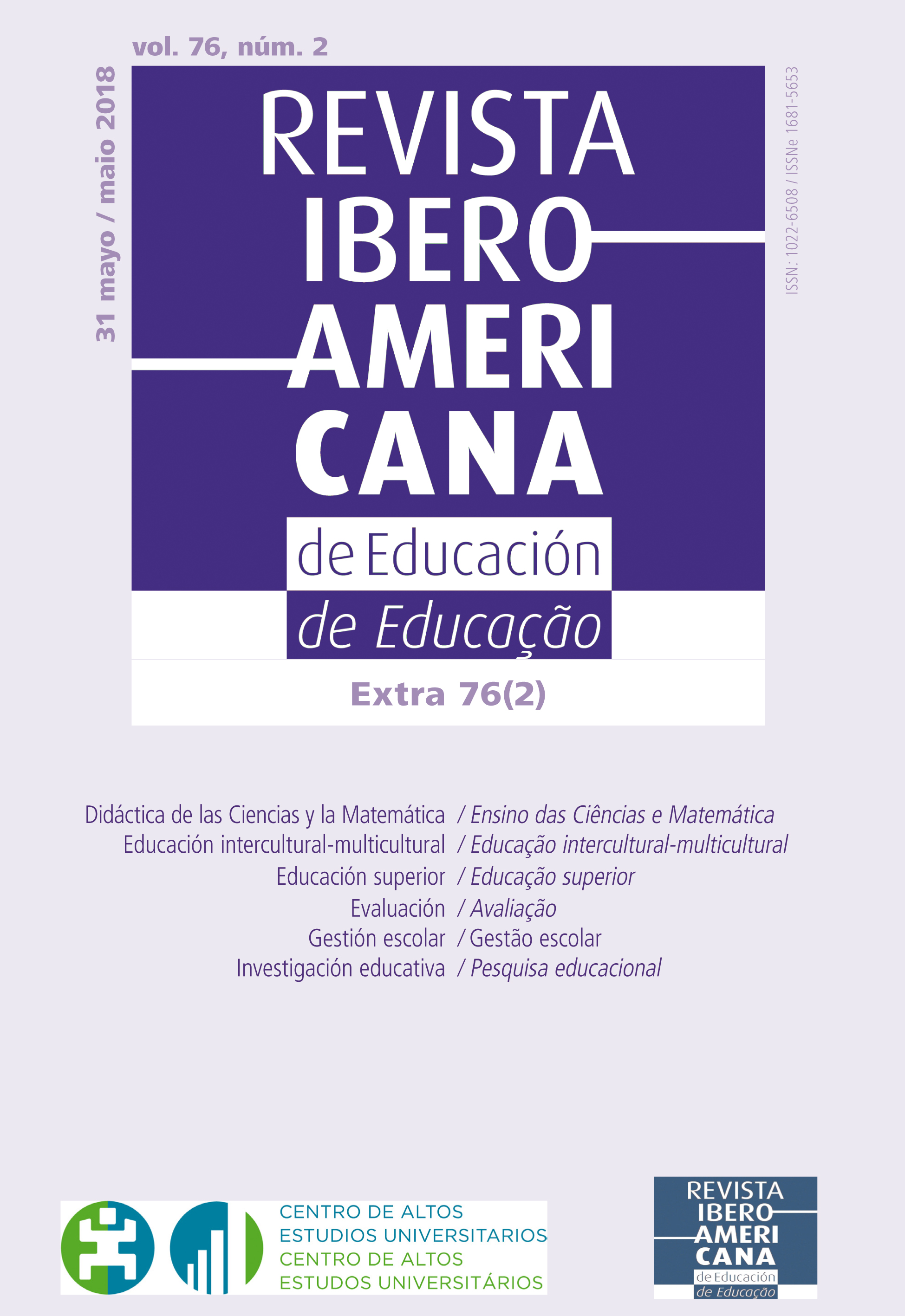Avaliar a prática de ensino com base nos comentários de estudantes universitários
DOI:
https://doi.org/10.35362/rie7623096Palavras-chave:
evaluación de profesores, desempeño del profesor, estudiantes, práctica docenteResumo
Se analizan los comentarios emitidos por estudiantes sobre la práctica de sus docentes en una universidad pública. Los comentarios constituyen información utilizada con frecuencia como parte de la evaluación docente, a partir de estos se realizan juicios y son considerados un elemento cualitativo dentro de la toma de decisiones por parte de los administrativos y directivos, no obstante escasos estudios los abordan. El presente trabajo analiza los comentarios de 568 estudiantes de las seis áreas del conocimiento, a partir del Modelo de Evaluación de la Competencia Docente el cual contempla tres dimensiones: previsión, conducción y valoración del impacto del proceso E-A. Los resultados indican que el 81% de los comentarios se clasificaron en alguna dimensión del modelo; se destaca cómo consideran a sus docentes con dominio para impartir clase, resolver problemas en clase, desarrollar actividades que fomentan el aprendizaje; mientras que, puntualidad, organización del tiempo, asistencia, y sobre todo la forma de valorar el proceso enseñanza-aprendizaje son valorados negativos. Se resalta la utilidad de la interpretación de los comentarios como información de tipo cualitativo en el sistema de evaluación docente, no solo al confirmar elementos evaluados por el instrumento de corte cuantitativo como los cuestionarios de opinión estudiantil y sino además evidenciar aspectos no contemplados por este.
Downloads
Referências
Benton, S. y Cashin, W. (2014). Capítulo 7, Student ratings of instruction in college and university courses. En M. Paulsen (Eds.) Higher Education: Handbook of Theory and Research Vol. 29 (279-326). Springer: EE.UU.
Brockx, Van Roy y Mortelmans (2012). The Student as a Commentator: Students’ Comments in Student Evaluations of Teaching. Procedia - Social and Behavioral Sciences. 69. 1122-1133. doi:10.1016/j.sbspro.2012.12.042
Cairus, D., Reyes, E., y Quinde, J. (2014). Características docentes percibidas como positivas por estudiantes universitarios. IV Congreso Internacional Nuevas Tendencias en la Formación Permanente del Profesorado. Universidad Adventista del Plata Universidad Adventista del Plata (UAP) en Buenos Aires, Argentina.
Calatayud, M. (2014). Evaluación de la práctica docente y calidad educativa: una relación encadenada. Revista Iberoamericana de Educación, 65(1), 1-12. Recuperado de https://rieoei.org/RIE/article/view/331
García, J. y Medécigo, A. (2014). Los criterios que emplean los estudiantes universitarios para evaluar la in-eficacia docente de sus profesores. Perfiles educativos, 36(143), 124-139.
García-Cabrero, B., Loredo, J., Luna, E., y Rueda, M. (2012). Competencias docentes en educación media y superior, desarrollo y validación de un modelo de evaluación. UABC, Juan Pablos Editor: México.
Garza-Quiñones, R. (2013). La evaluación docente desde la perspectiva de los alumnos. Ponencia presentada en el 1er. Congreso Internacional Virtual de Investigación en Educación Superior Online, Tijuana B.C., México. Recuperado de http://www.comie.org.mx/congreso/memoriaelectronica/v11/docs/area_13/2423.pdf
Gómez, S. y Medina, S. (2015). Aspectos distintivos y semejantes en poblaciones estudiantiles universitarias de diferentes carreras. Primeras referencias sociodemográficas. Educación. 24(47), 115-133. Recuperado de http://revistas.pucp.edu.pe/index.php/educacion/article/view/14248/14867
González, J. y Subaldo, L. (2015). Opiniones sobre el desempeño docente y sus repercusiones en la satisfacción profesional y personal de los profesores. Educación. (24) 47. Recuperado de http://revistas.pucp.edu.pe/index.php/educacion/article/view/14247/14865
Lewis, K. (2001). Making Sense of Student Written Comments. New Directions for Teaching and Learning. 87, 25–32.
Linse, A. (2017). Interpreting and using student ratings data: Guidance for faculty serving as administrators and on evaluation committees. Studies in Educational Evaluation 54, 94–106. Recuperado de https://doi.org/10.1016/j.stueduc.2016.12.004
Luna, E. y Reyes, E. (2015). Validación de constructo de un Cuestionario de Evaluación de la Competencia Docente. Revista Electrónica de Investigación Educativa, 17, 13-27. http://www.redalyc.org/pdf/155/15540997002.pdf
Rueda, M., Luna, E., García, B. y Loredo, J. (2010). La evaluación de la docencia en las universidades públicas mexicanas: un diagnóstico para su comprensión y mejora. Revista Iberoamericana de Evaluación Educativa. 3(1e), 77-92. Recuperado de https://revistas.uam.es/index.php/riee/article/view/4506
Scriven, M. (1995). Student ratings offer useful input to teacher evaluations. Practical Assessment, Research & Evaluation, 4(7). Recuperado de http://pareonline.net/getvn.asp?v=4&n=7
Spooren, P., Brockx, B. y Mortelmans, D. (2013). On the Validity of Student Evaluation of Teaching. Review of Educational Research. 83(4), 598 – 642. doi 10.3102/0034654313496870
Theall, M. y Franklin, J. (2001). Looking for Bias in All the Wrong Places: A Search for Truth or a Witch Hunt in Student Ratings of Instruction? New Directions For Institutional Research, 109, (45-56).
Zimmaro, D., Gaede, C., Heikes, E., Shim, M. y Lewis, K. (2006). A study of students’ written course evaluation comments at a public university. Austin: University of Texas, Recuperado de https://testingservices.utexas.edu/sites/default/files/A-Study-of-Students-Written-Course-Evaluation-Comments-at-a-Public-University-2006.pd
Como Citar
Downloads
Publicado
Edição
Secção
Licença
Os(as) autores(as) que publiquem nesta revista concordam com os seguintes termos:















